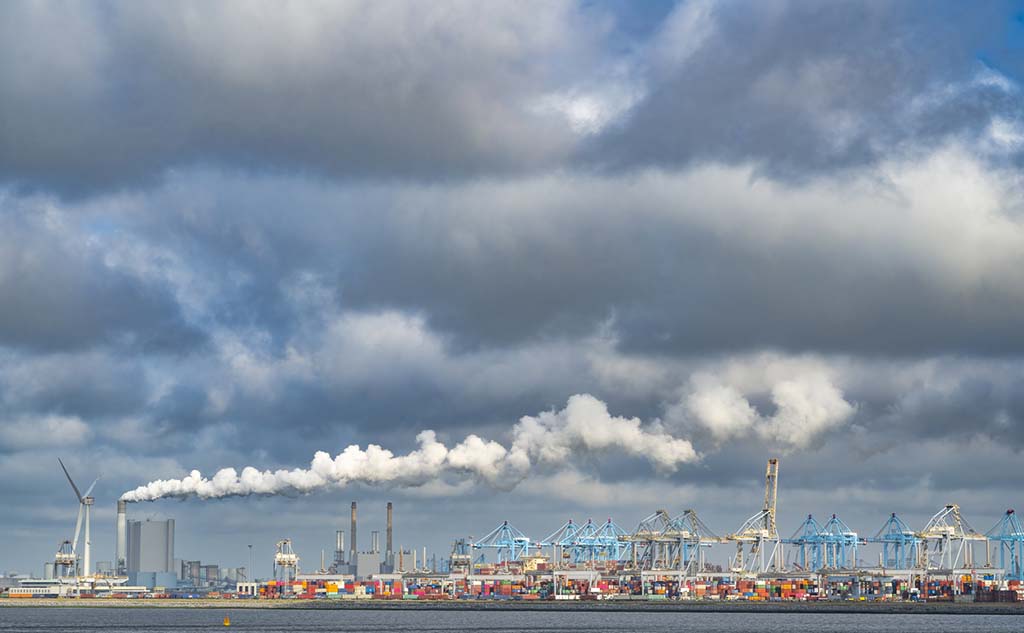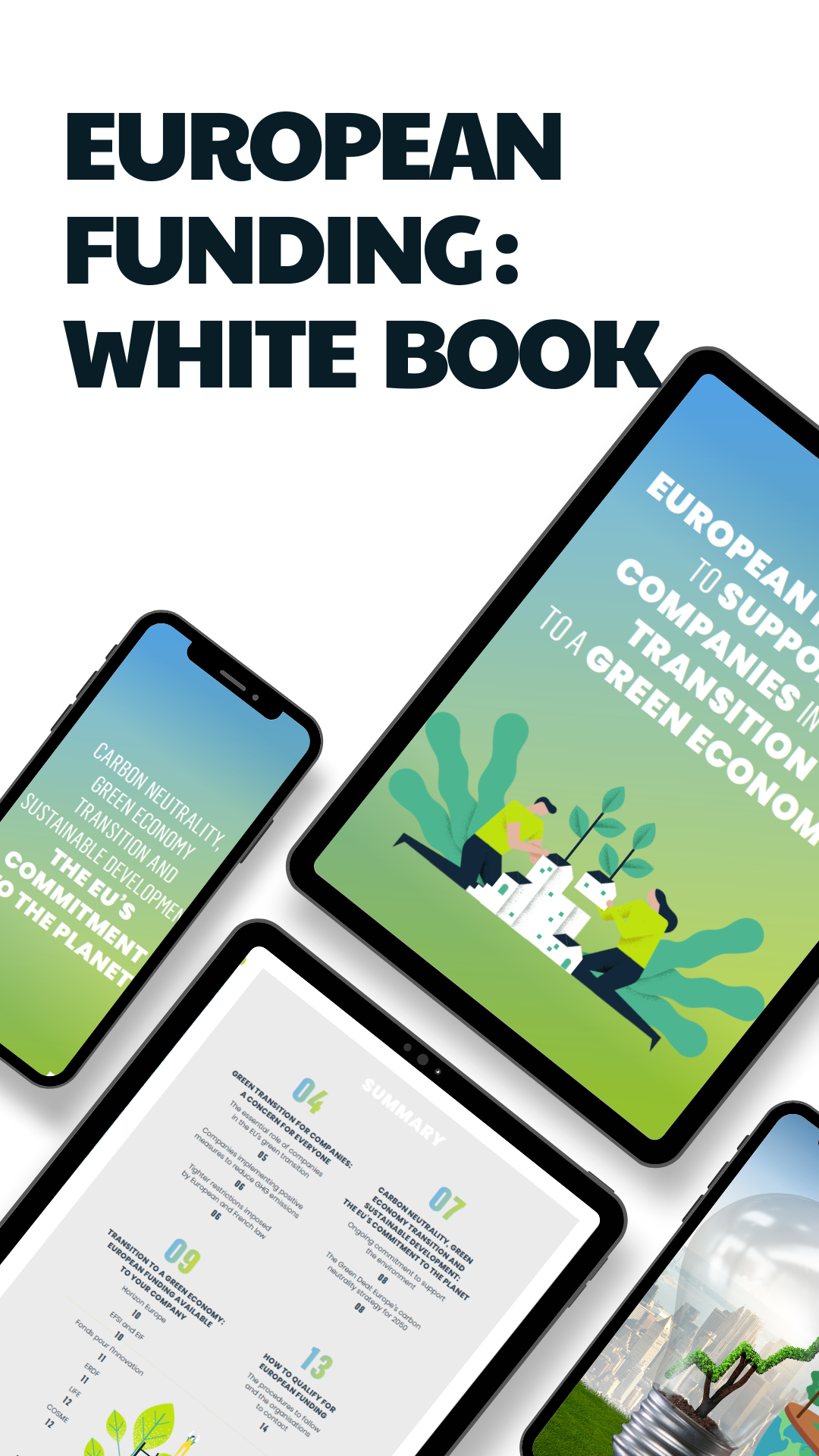Today, making ports more environmentally friendly is often equated with the greening of maritime transport. But beyond maritime traffic flows, the entire range of activities taking place in ports and their environs are involved. The ecological transition of port regions is all the more essential since it is part of bringing together cities and their ports.
Integration of the port into its region
At European level, the Sustainable Blue Economy strategy (May 2021) underlines the fact that all sectors, including port activities and shipbuilding, must reduce their environmental and climate-related impact. A few months earlier, France’s new port strategy fixed the objective of making ports important links in strengthening supply chains, tools for accelerating the ecological transition, drivers in promoting the digital transition and instruments in ensuring regional development. Because beyond the development of their merchandise-handling capability, ports must address questions related to their accessibility (dredging), the multi-modality of their transport links and the improvement of their spaces.
Port areas: regions facing many issues
A port region faces challenges in terms of economic development, planning and the environment. Large areas of land are given over to logistics areas and warehouses directly linked to port activities (merchandise, raw material and energy flows). And historically, numerous industrial activities have developed there, in particular hydrocarbon processing (refineries, petrochemicals), electricity production (thermal power stations), steel-making and automotive manufacturing.
Pioneers in industrial ecology
Ports were the first to introduce an industrial ecology approach at the end of the 20th century (Kalundborg, Dunkirk and others). First established between industries (e.g. steam from one factory fed to another facility, or the waste products of one being the resources for another), these “symbioses” gradually extended out into the surrounding region and today urban districts, or even small communes, are supplied with waste energy from industrial sites.
City and port: a closer link…
Where, as gateways for global trade, ports were previously seen as economic units sitting alongside the city, they are now regarded as a global system that brings added value to the whole region. This in fact is what the AIVP (International Association of Port Cities) has been working towards for over 30 years (see below). We should also note that the Port du Futur (Port of the Future) project, led by the DGITM* and the CEREMA, has been going since 2011 to promote innovation in the port sector and identifies the relationship between a port, its city and their region as one of its main pillars.
… particularly as regards environmental and energy issues
Today, cooperation between cities and ports makes particular sense in terms of the ecological and energy transition – all the more so in the context of re-industrialisation and sovereignty. Decarbonisation and the circular economy are two key areas for diversification. Beyond the electrification of quays and transformation of port equipment, one of the main avenues being explored is the production of renewable energy and of new energy sources such as hydrogen, often on sites formerly used for the processing of fossil fuels That could be the manufacturing and assembly of wind turbine components, or equally the construction and development of the sites needed for the production of energy from the sea and its associated equipment (see box). Other projects involve carbon capture and storage, while others again concern the conversion of biowaste into biomethane.
A few examples of projects
One iconic example is the offshore wind farm factory at Le Havre, which produces blades and assembles nacelles for five of the six offshore wind farms currently being developed in France. Another example is Port-la-Nouvelle which is studying the installation of a hydrogen production and storage facility to supply heavy transport and port activities and is also creating a new system (embankment, waterfront and associated dredging) to provide optimum facilities for offshore wind farm operations. For its part, Antwerp-Bruges, which has converted a former General Motors plant to a site devoted to circular economy projects, is aiming to position itself as a European green hydrogen hub.
Towards sustainable port cities
Created in 1988 by Antoine Rufenacht, then mayor of Le Havre, the International Association of Port Cities (AIVP) aims to improve the relationship between cities and their ports through mutual cooperation to achieve more sustainable, responsible and innovative urban, port and economic development. Today it has 200 members in more than 50 countries (urban authorities, port authorities and partners). In 2019 it deposited at the UN the AIVP Agenda 2030, which adapts the 17 Sustainable Development Goals (SDG) to the specific context of city-port relations. This initiative starts with the observation that port cities, particularly concerned with the consequences of climate change (vulnerability to submersion, flooding, storms, etc.), are well placed to experiment with innovative solutions in this field. The Agenda is thus organised around ten commitments including adaptation to climate change, the energy transition and the circular economy, sustainable transport, biodiversity protection, health and quality of life. The association, which has just launched a training programme (see box), is creating a prize to be awarded for an exceptional City-Port development project starting from 2023.
E-learning course devoted to sustainable port cities
This year, in partnership with the International Institute of Port Cities, the AIVP has launched a remote learning course entitled “Sustainable Port Cities”. This course, based on five successive elements*, aims to provide a systemic and interdisciplinary understanding of port cities and to highlight the problems encountered by stakeholders in their professional lives, by contextualising and comparing those problems, and contributing to the development of thinking about how to move towards more sustainable port cities.
*Governance of port cities; Sustainable economy of port cities; Urban and natural environments of port cities; Heritage and culture of port cities; Prospects for port cities.
*Directorate General for Infrastructure and Transport (Ministry for the Ecological Transition and Ministry for Territorial Cohesion)
Go further
Olivier Lemaire, then director general of the AIVP, made some interesting predictions (“What port city in 2050? “) as conclusion to a publication* by the National Federation of Urban Planning Agencies (FNAU) in 2021. The FNAU includes numerous themed clubs and working groups, including the Maritime and Port Regions Club that was set-up in 2009 at the instigation of the agencies in Le Havre and Marseille.
*”Port, villes et transitions”, (“Port, Cities and Transition”) Points FNAU 13, coll. Alternatives, Gallimard, 2021
Learn more: What can we do to future-proof our coastlines?




